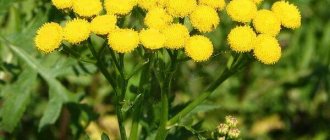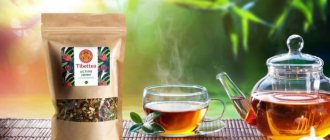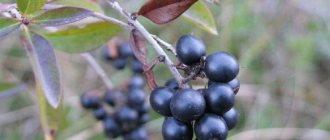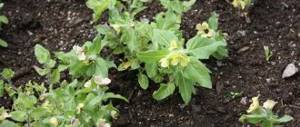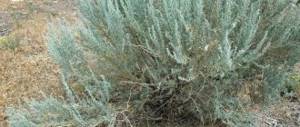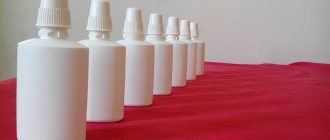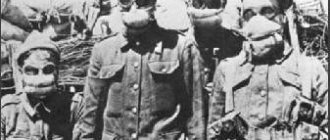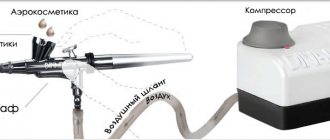Wormwood is a herbaceous plant common in Central Asia, the Caspian region, the Caucasus and Crimea.
Wormwood contains a large amount of biologically active substances, due to which it is widely used in folk medicine to treat diseases of internal organs. Wormwood is part of the popular alcoholic drink – absinthe.
Source: depositphotos.com
Symptoms
Long-term use of drugs containing wormwood or its extracts leads to the accumulation of toxic substances in the body and the development of chronic poisoning. Its symptoms:
- increased salivation;
- vomit;
- diarrhea;
- bradycardia;
- spasm of blood vessels;
- nervous excitement;
- epilepsy-like seizures.
If the patient is not provided with medical assistance, a state of stunning occurs, and then a coma develops, even leading to death.
Source: depositphotos.com
Main manifestations
Symptoms of wormwood poisoning occur as a result of the use of medicines and preparations containing wormwood extracts. In this case, the patient develops chronic intoxication associated with the constant exposure of toxins to the body.
Main manifestations:
- nausea and vomiting are associated with constant irritation of the gastric mucosa and disruption of the autonomic nervous system (see);
- diarrhea occurs in connection with similar processes affecting the large and small intestines (see);
- patients experience a decrease in heart rate and a tendency to edema;
- transient spasms of blood vessels of various locations appear;
- due to a violation of inhibition processes in the brain, the patient is in a state of nervous excitement;
- convulsive syndrome of the epileptoid type.
- in cases of failure to provide medical assistance, quantitative disturbances of consciousness develop - stunning, followed by coma, and then the death of the patient.
Despite the harmlessness of the initial manifestations of poisoning (nausea, loose stool), chronic poisoning quickly leads to disruptions in the functioning of internal organs, especially the central nervous system (see). The outcomes of such conditions are most often fatal. In this regard, if any symptoms of poisoning appear, you must contact your doctor to carry out diagnostic measures and prescribe adequate treatment.
First aid for wormwood poisoning
If signs of poisoning appear, it is necessary, first of all, to stop further intake of wormwood. Since wormwood poisoning is chronic, rinsing the stomach is pointless. While waiting for medical help, you should do the following:
- Place the patient in bed and apply a cold compress (towel soaked in cold water) to the head.
- Provide fresh air flow.
- During convulsive seizures, ensure the safety of the patient: make sure that he does not fall out of bed, bite his tongue, or suffocate with a sunken tongue or vomit. Immediately after the end of the attack, the oral cavity should be cleared of accumulated saliva and, possibly, vomit.
- Drink as much as possible of any warm liquid (tea, milk, water).
- If there is no diarrhea, take Vaseline oil orally.
Causes of poisoning
Frequent patients in toxicology departments are people who received henbane poisoning by accident:
- when weeding an area from weeds or collecting herbs for subsequent medicinal use;
- in case of accidental consumption due to slight confusion with the roots of white carrots or common parsley, with poppy seeds;
- when a child ingests bright colors that attract curious children left unattended.
Prevention:
- When collecting herbs or cleaning your summer cottage from unwanted vegetation, you must use gloves and safety glasses;
- carefully monitor what you eat;
- do not leave children unattended while relaxing in nature, point out the dangers associated with eating unfamiliar berries and shoots.
When is medical attention required?
Wormwood poisoning is associated with prolonged exposure to toxic substances on the patient’s central nervous system. Therefore, the appearance of its first signs is always an indication for seeking specialized medical help.
Patients are treated by toxicologists in an inpatient setting. If necessary, related specialists, such as neurologists and/or psychiatrists, may be involved.
There is no specific antidote for wormwood poisoning. Symptomatic therapy is carried out. Extracorporeal detoxification may be required to speed up the removal of wormwood toxins from the body. General strengthening treatment is indicated, including taking vitamins, intravenous administration of glucose and saline solutions, diet therapy, and adherence to a protective treatment regimen.
Treatment
The main goal of therapy is to reduce the effect of wormwood toxic substances on the central nervous system. Treatment is carried out in the toxicology department
.
There is no specific one, so measures are taken aimed at general cleansing of the body. Usually various dialysis, plasmapheresis, and hemosorption are performed.
Patients are also prescribed B vitamins and other vitamins to restore the functioning of organs and systems of the body. Infusion treatment is carried out. If first aid and treatment are provided in a timely manner, the patient will recover very quickly.
Possible consequences
In most cases, with properly organized treatment, wormwood poisoning ends in recovery.
Against the background of a convulsive attack, aspiration of vomit may occur, which leads to the development of aspiration pneumonia.
After severe poisoning with wormwood, a patient may experience physical and mental asthenia for a long time, decreased ability to work, sleep and mood disturbances, which is associated with the development of encephalopathy, that is, damage to brain tissue by toxic substances.
Diagnostics
To establish wormwood poisoning, the patient is asked about what diseases he suffered previously, whether he used folk remedies and medicines based on wormwood. But making a diagnosis becomes significantly more difficult if the patient hides information about the long-term use of extracts, decoctions of wormwood or absinthe.
Upon visual examination, it can be established that the victim’s speech becomes inadequate, the voice is raised, and the person is in a state of increased mental excitability. The epidermis becomes pale.
Prevention
To prevent wormwood poisoning, extensive sanitary and preventive work among the population is necessary. It is unacceptable to treat with wormwood without a doctor’s prescription, and when taking medications prescribed by a doctor, exceed the prescribed dose. It is very important not to exceed the duration of the course of treatment, and take breaks of at least three weeks between courses.
Absinthe lovers should seriously limit their consumption.
Wormwood - Artemisia Absinthium L. » style=»border-style:solid;border-width:6px;border-color:#ffcc66;» width=”250″ height=”334″> style=”border-style:solid;border-width:6px;border-color:#ffcc66;” width=”250″ height=”333″>
Other names:
Wormwood, Bitterness, Wild pepper, White wormwood, Real wormwood, Garden wormwood, Field wormwood.
Diseases and effects:
chronic diseases of the pancreas and biliary tract, colitis, worms, bronchial asthma, eczema, x-ray burns, alcoholism, external hemorrhages, dislocations, sprains, bee, wasp and mosquito bites.
Active substances:
absintin, anabsintin, flavonoids, thujone, pinene, cadinene, bisabolone, chamazulenogen, selinene, phytoncides, alkaloids, capillin, ascorbic acid, provitamin A, malic acid, succinic acid, tannins, saponins, carotene.
Time to collect and prepare the plant:
June August.
Botanical description of wormwood
Perennial herbaceous plant up to 2 m high, of the Compositae family. It has a very strong unique aroma.
The plant is densely pubescent with short, appressed hairs, giving the wormwood a grayish-silver color.
Root
thick, rod-like.
Stem
straight, up to two meters high, branched.
The lower leaves have long petioles, triangular-rounded in outline, with a blade three times pinnately dissected into linear-oblong lobes. Middle leaves
with short petioles, twice pinnately dissected.
The upper leaves
are almost sessile, pinnate.
Bracts
are cut or whole.
Flowers
yellow, very small, tubular, marginal - female, middle - bisexual, collected in baskets with a diameter of 3 mm, sessile on short branches with one-sided racemes, forming, in turn, a panicle.
Fruits up to 1 mm long, brownish, oblong achenes.
It blooms in July–August, the fruits ripen in August–October. It is found as a weed in various climatic zones. Grows in dry meadows, pastures, vegetable gardens, forest clearings, among bushes, fields, gardens, and near roads. Sometimes it forms entire thickets.
Rules for harvesting wormwood
The herb and leaves of wormwood are used for medicinal purposes.
The leaves are harvested before flowering (June-July), plucking or cutting them without petioles, and the grass is harvested at the beginning of flowering (July-August), cutting off the tops of the stems with sickles or knives. If the collection is late, the grass becomes dark gray in color when dried, and the baskets become brownish-brown and crumble.
Dry leaves and grass in attics, under an iron roof or under sheds with good ventilation, spreading a layer of 5-7 cm on cloth or paper.
Wormwood is a potent plant and must be handled with caution.
Raw materials - grass consists of the tops of leafy and flowering stems up to 25 cm long, without coarse lignified parts. Dry grass is packed into bales, bales or bags. Shelf life up to 2 years. Store raw materials in dry, well-ventilated areas, on racks.
Possible admixtures of other types of wormwood. The most often mistakenly collected is Austrian wormwood.
and
wormwood
. The first species is distinguished by its small height (20-50 cm) and almost white, small (1-3 cm long) leaves, dissected into narrow linear lobes. Wormwood (Chernobylnik) is a tall (150-200 cm) plant with a ribbed, reddish stem and small pink or reddish flowers collected in baskets.
How to prepare
Wormwood is a plant found everywhere, so collecting it yourself is not difficult. The leaves are harvested before the plant begins to flower - in June. Stems with leaves - during flowering in July, cut them approximately 20 cm from the top. Dry the raw materials in the shade for five to seven days (the layer of plants during drying should not be thicker than 5 cm). High-quality dried grass is easily crushed if you try to bend it.
You can use an electric dryer. The temperature should not be higher than 50° C, otherwise the essential oil will evaporate and the plant will lose its healing properties.
Dried raw materials can be stored for 2 years in paper bags or linen bags. Pharmacies sell ready-made wormwood-based medicines.
Pharmacological properties of wormwood
Galenic preparations of wormwood, like all bitters, reflexively stimulate the secretory function of the glands of the gastrointestinal tract, increase bile secretion and significantly improve digestion. This effect is explained by an increase in the excitability and response of neuroreceptors of the mucous membranes of the gastrointestinal tract to the intake of food products.
In addition, there are reports in the literature about the biological activity of saturated hydrocarbons isolated from wormwood essential oils. According to preliminary experimental data, they have a bactericidal effect. The unsaturated hydrocarbon capillin has fungicidal properties and is effective against diseases caused by pathogenic fungi. Japanese researchers classify capillin, isolated from wormwood, as an active antibiotic.
Herbal preparations of wormwood, especially their active chemical compounds arsumin (sum of lactones) and absinthine (individual lactone), have a number of pharmacotherapeutic effects. In an experiment on white rats, it was found that absinthine and arsumin have an anti-inflammatory effect. The antiulcer properties of decoction and tincture of wormwood largely depend on the presence of the amount of lactones or absinthine in these preparations. Absinthine, to a greater extent than arsumin, contributes to the stabilization of immune reactions, as evidenced by the intensification of the phase of proliferative phenomena in places of gastric ulcers during the experimental study of absinthine.
When treating experimental ulcers with polysaccharides of wormwood, there was no acceleration in the time of scarring of ulcers. However, the use of wormwood polysaccharides in white rats during experimental aseptic inflammation showed some positive anti-inflammatory effects.
Chamazulene, isolated from the herb wormwood, has an anti-inflammatory effect and is recommended for the treatment of bronchial asthma, eczema, and x-ray burns.
Medicinal uses of wormwood
Tincture, infusion (tea) and wormwood extract are used as a bitter to stimulate appetite and improve the functioning of the digestive system. Wormwood is included in gastric drops, gastric tablets, appetizing and choleretic infusions (teas). When prescribing choleretic tea to patients suffering from chronic diseases of the pancreas and biliary tract, pain and dyspeptic symptoms decrease or completely disappear, appetite improves, and stool normalizes. The combined use of bitters with medicinal herbs that have choleretic properties significantly increases the therapeutic effectiveness for diseases of the gastrointestinal tract.
For colitis, a decoction of wormwood and sage leaves is successfully used, 1 tablespoon every 2 hours for 2-3 days. To expel pinworms after bowel movements, an enema is given from a water tincture of wormwood and a decoction of garlic. A decoction of garlic is prepared from one medium head per 1-1.5 cups of wormwood water infusion. Enemas are given for several days in a row until the worms completely disappear. An infusion of wormwood in combination with mint and sage leaves is used to rinse the mouth to eliminate bad odor.
How I harmed my stomach with wormwood - video
Wormwood (Artemisia L., family Asteraceae) - there are more than 200 species. Wormwood is widespread in the Crimea, the Caucasus, the Caspian region and Central Asia. Only wormwood is toxic to animals in some areas.
Most often, poisoning occurs in hungry animals or animals brought from other regions when eating Tauride wormwood (Artemisia taurica), which has several local names: white wormwood, looped wormwood, dzhussan (Kyrgyzstan).
Tauride wormwood is a low plant with a powerful root system and a stem 30 to 60 cm high, leaves twice and three times pinnately dissected, with blunt, diverging lobules. The apical leaves are entire. The whole plant is white-tomentose or grayish-woolly. The flowers are collected in baskets, usually 3-5 flowers. The baskets are oblong, sharply elongated in length. All the flowers in the basket are identical, bisexual.
Tauride wormwood is a perennial plant that grows along the shores of the Black, Azov and Caspian Seas, mainly on saline and chalk soil. It is found in large tracts or is part of steppe vegetation. The contamination of hay, which comes from the regions of the North Caucasus, Dagestan, and the Mungan steppe, can be very significant. There are areas where the toxicity of wormwood is especially high. In some cases, animal owners consider Tauride wormwood not only harmless, but also a good fodder plant for sheep (especially in winter). At the same time, mass poisonings are possible in the same animals as a result of eating wormwood.
Toxicology. Wormwood is poisonous both fresh and dried to horses, cattle, sheep, camels and other animals. The toxic dose for a horse is 200-500g of dry wormwood, the fatal dose is 500-700g; for a sheep the toxic dose is 200-300g, lethal -500g.
The toxicity of wormwood is due to the essential wormwood oil. Its composition depends on the variety of wormwood and therefore is distinguished by its inconstancy. The entire plant is poisonous. Drying the plant does not change its toxicity. The essential oil is very persistently retained in the plant, amounting to 0.6-0.8% after 5 years of storage. The bitter substance of wormwood, absinthine, is slightly toxic, but, easily absorbed, gives milk and meat a characteristic wormwood smell and taste.
Pathogenesis. The toxic substances of wormwood act on the nervous system of animals. Wormwood oil causes a state of strong excitement in the poisoned animal, epileptic convulsions, a state of stunning and loss of consciousness appear. Tauracin, in addition, acting on the autonomic nervous system causes drooling, vomiting, diarrhea, vasospasm and bradycardia in the animal.
Clinical picture. During clinical examination, horses with acute fatal poisoning are agitated, fearful, have increased skin sensitivity, and are restless. Then the poisoned horse develops convulsive twitching of individual muscles (head, lips, neck, etc.) turning into general muscle tremors. 1-2 hours after the owners detect the first signs of abnormal behavior in the horse, typical epileptiform convulsions may appear. Such seizures follow one after another with a short interval, during which the horses quickly rush forward, not noticing anything behind them, climb onto the fence, feeding trough and other objects near which they were or were tied. After such intense excitement, which often results in severe injuries to the horse's head and chest, the horse falls to the ground and begins to convulse clonicly. With careful observation, animal owners may notice that the appearance of random clonic convulsions is preceded by a strong convulsive tension of the entire muscles, resulting in a characteristic backward bending of the neck (opisthotonus), limbs (the pectorals are pulled towards the chest, and the pelvic ones are extended), the jaws are compressed, and breathing almost stops . This all lasts only a few seconds (20-30), after which the horse begins to have actual convulsions with vigorous swimming movements. A sick horse hits its head on the ground, grinds its teeth, groans, sometimes tries to get up and falls again. During such an attack, the fur becomes damp, sweat sometimes appears in drops, and body temperature rises sharply (up to 40.5°). The pulse becomes rapid and weak, sometimes arrhythmic, cardiac activity progressively weakens, especially after an attack. If the poisoned horse's breathing before the attacks was deep, slow and tense, then after the attacks it becomes erratic, rare and pronounced abdominal type. The look becomes frightened, the pupils are somewhat dilated. After an attack, the animal experiences prolapse of the 3rd eyelid, increased humidity in the oral cavity (sometimes drooling), and a decrease in sensitivity occurs. Defecation and urination slow down. We register constipation. After several seizures, the horse's convulsions become weaker, general sensitivity decreases, breathing slows down, and the horse soon dies (after 3-5 hours). It is typical that sometimes before an attack, animal owners note 1-3 convulsive tremors of the body.
In case of chronic poisoning, movement disorders in horses develop gradually and manifest themselves in muscle twitching (lips, neck, etc.), trembling of the lower jaw, grinding of teeth and characteristic clicking of the front teeth. A poisoned horse lies for a long time, its movements become clumsy and difficult. When lying down, the head is pressed to the chest, or unnaturally thrown back. Depending on various conditions, chronic poisoning lasts a very long time (sometimes several months). In some animals, poisoning may be accompanied by convulsive seizures. Owners note a sharp change in the behavior of the animals: they become very agitated and angry. In chronic poisoning, in addition to nervous symptoms, we note damage to the gastrointestinal tract, increased salivation, yellowness of the mucous membranes and bilirubinemia.
In sheep, nervous symptoms are additionally accompanied by symptoms of kidney damage.
Pathological changes. When autopsying the corpses of animals that died from acute poisoning (after 4-12 hours), the veterinarian cannot detect characteristic pathological changes. There are hemorrhages under the mucous and serous membranes (heart, pleura, bladder), as well as in the brain tissue. With a prolonged course of the disease, these changes become clearer. The contents of the stomach have the smell of wormwood, the subcutaneous tissue has an icteric color, and catarrhal inflammation of the gastrointestinal tract. Sharp congestive hyperemia and swelling of the brain.
Diagnosis. Acute cases of horse poisoning with wormwood are determined by a veterinarian by the presence of characteristic lesions of the central nervous system. Detection of wormwood in the animal’s diet (hay), as well as in the pasture where the animals became ill.
In case of chronic poisoning, the disease is diagnosed based on the clinical picture and as a result of feed analysis.
Differential diagnosis. In case of acute poisoning, the veterinarian must distinguish poisoning from infectious encephalomyelitis.
Forecast. In case of acute poisoning with violent epileptiform convulsions, accompanied by an increase in body temperature (up to 40° and above), sweating, etc., the prognosis should be unfavorable. The mortality rate in such cases, even with medical care, remains high.
Convulsive attacks without an increase in body temperature, isolated convulsive twitches, as well as chronic cases of poisoning with only unsteadiness of gait most often end in recovery. In these cases, the prognosis may be cautious.
Treatment. In acute cases of poisoning, when the animal has already begun to have epileptiform seizures, first aid is reduced to the use of sedatives. Good results are obtained by applying cold compresses to the head.
In case of chronic poisoning, first of all, it is necessary to empty the gastrointestinal tract of contents by gastric lavage. To do this, 60-100 g of sodium bicarbonate or 6-12 g of potassium permanganate are dissolved in 3-6 liters of water and the solutions are injected into the stomach through a naso-esophageal tube. Before this, the horse is injected through the rectum with 50-70 g of chloral hydrate in a mucous decoction. Mild laxatives (vegetable or castor oil) are given internally. A 40% glucose solution of 200-300 ml is administered intravenously. When cardiac activity is weakened, caffeine or camphor oil is used subcutaneously.
Prevention. Prevention of poisoning is achieved by protecting animals from eating grass or hay contaminated with wormwood. Animal owners should remember that the risk of poisoning in a hungry animal by greedily, indiscriminately grabbing hay contaminated with wormwood increases. The risk of poisoning also increases when transporting hay contaminated with wormwood to those areas and farms where this plant does not grow or when driving animals through an area where wormwood is present in the grass.
Wormwood is a herbaceous plant common in Central Asia, the Caspian region, the Caucasus and Crimea.
Wormwood contains a large amount of biologically active substances, due to which it is widely used in folk medicine to treat diseases of internal organs. Wormwood is part of the popular alcoholic drink – absinthe.
Dosage forms of wormwood preparations
Thick wormwood extract
(Extractum Absinthii spissum) - extract from wormwood herb. A thick mass of dark brown color with an aromatic smell of wormwood and a bitter taste. Prepared from leaves and flowering leafy tops. Forms a cloudy solution with water. Apply 10-20 drops 30-40 minutes before meals 3 times a day.
Wormwood tincture
(Tinctura Absinthii) (1: 5) in 70% alcohol - a clear liquid with a brownish-green color and a characteristic odor and very bitter taste. Take 15-20 drops 3 times a day 15-20 minutes before meals. Available in 25 ml bottles.
Infusion of wormwood herb
(Infusum herbae Absinthii): 10 g (2 tablespoons) of the herb are placed in an enamel bowl, pour 200 ml (1 glass) of hot boiled water, cover with a lid and heat in boiling water (in a water bath) for 15 minutes, cool at room temperature 45 min, filter. The remaining raw materials are squeezed out. The volume of the resulting infusion is adjusted to 200 ml with boiled water. The prepared infusion is stored in a cool place for no more than 2 days. Take 1/4 cup 3 times a day 30 minutes before meals. Available in packs of 100 g.
Wormwood is part of Riga balsam.
For diabetes
Wormwood contains an insulin-like substance that is used as a means of lowering blood sugar levels.
- Grind the dry wormwood herb to a powder and sift. Make a ball with a dimple from the brown bread crumb. Pour powder into the cavity on the tip of a knife, form a ball and eat. Use for 14 days three or four times a day. Longer use of the drug will cause vomiting and poisoning.
- You can use an alcoholic tincture of wormwood for the same purpose. Grind the herb, 2 tbsp. Place the spoons in a glass container and pour 100 ml of ordinary vodka into it. Seal and leave to infuse for 8 days. Then shake, strain and pour into another container. Drink 15 drops 3 times a day before meals. The tincture can be stored in a tightly closed container in the refrigerator.
Wormwood in medicinal plant collections
Collection No. 3 Used for gastritis, secretory insufficiency
Collection No. 6 Used for increased secretion, peptic ulcer. According to the method of preparation and use - infusion.
Collection No. 7
Collection No. 8 The collection has an appetite-stimulating effect. According to the method of preparation and use - infusion.
Collection No. 9 Used for stomach diseases. According to the method of preparation and use - infusion.
Among the variety of useful herbs and plants, those whose effectiveness is recognized in scientific circles are included in a separate group. This group includes wormwood, the medicinal properties and contraindications of which are taken into account both by traditional healers and when creating medications based on it. What is so remarkable about this plant?
For men
The use of wormwood has a positive effect on the organs and systems of the male body:
- An effective drug to combat impotence.
- Helps in the treatment of prostatitis.
- Helps increase stamina and male strength.
- Used as a medicine in the treatment of urinary tract diseases of an infectious nature.
- An effective remedy in the treatment of alcohol dependence, as it causes a persistent aversion to alcohol.
- The plant can eliminate the symptoms of hangover and alcohol poisoning.
The benefits of natural composition
There are a lot of different varieties of wormwood. And first of all, they differ visually. Wormwood, being one of the medicinal plants, but having toxic components in its chemical composition, has a specific smell and bitter taste. When deciding to collect this herb yourself for home drying during the flowering period, you need to see it in the photo so as not to confuse the desired plant variety. The photo below shows wormwood.
of bitterness
and
essential oils
in its composition , which make this herb especially healing. However, wormwood is not only rich in such components. Certain benefits and positive effects on the human body are achieved thanks to the variety of elements, vitamins, and substances included in the natural composition of the plant.
Wormwood medicinal properties and contraindications: features of the plant's composition
- tannins are present in large quantities in the plant;
- B vitamins, for example B6 and B9, as well as vitamins A, C, PP;
- the healing properties of wormwood are revealed thanks to the following elements: sulfur, copper, potassium, molybdenum, iron, calcium, zinc, nickel, magnesium, aluminum;
- Among the natural beneficial acids, malic, isovaleric, succinic and acetic acids are found in it;
- essential oils: phellanderene, thujol, thujone;
- the plant has an extremely low calorie content (no more than 25 kcal), and no fat is found in it;
- The benefits and healing of the body with the help of bitter wormwood are achieved due to the presence of resins, chamazulene, tannins, terpenoids, glycosides, and amino acids in its composition.
Due to such an outstanding natural chemical composition, the herb wormwood has various medicinal properties on the body. It can be used as a medicine or as a preventive measure. Based on plant extracts and essential oils, medicinal preparations that have proven themselves are produced.
conclusions
To avoid intoxication with this plant, you need to know that products containing wormwood should not be used without a doctor’s prescription. Folk remedies should also not be used for self-medication. If the doctor has prescribed medications based on this herb, then under no circumstances should the dosage regimen and duration of the treatment course be violated.
Although wormwood poisoning is not a common occurrence, it is still very dangerous. We should never forget to be careful when using preparations containing wormwood.
Otherwise, you can get seriously poisoned, sometimes even fatal. If used correctly, wormwood can cure various diseases.
The site provides reference information for informational purposes only.
Diagnosis and treatment of diseases must be carried out under the supervision of a specialist. All drugs have contraindications. Consultation with a specialist is required! Wormwood
is a wonderful plant. It grows in almost any ditch, and has an amazing smell and healing properties. But wormwood is a poisonous plant. Therefore, not everyone can use it for treatment. The website) will tell you about them.
What functions does grass have?
Useful properties and features of bitter wormwood:
Despite the fact that the use of wormwood has become very widespread due to its natural characteristics, before the course of treatment you need to know some nuances. Otherwise, the herb may act as a toxic substance for the body.
What to consider when taking wormwood?
- Due to the chemical characteristics of medicines based on this plant, it is unacceptable to combine them with dairy products, eggs, alcohol consumption and smoking.
- The course of taking wormwood varies from 5 days to one month. It is important to consult with your doctor before starting the course.
- After the last day of admission you need to take a month's break.
- It is necessary to carefully follow the instructions on the packaging of drugs, preparations, tinctures and not exceed the indicated dosage.
The beneficial effects of wormwood and its healing effects are achieved primarily through bitterness.
Therefore, adding various kinds of sweeteners to teas or decoctions is excluded. In what form should the herb be consumed?
- homemade infusions of dry or fresh wormwood; when dried, it does not lose its qualities;
- extracts, tinctures and decoctions;
- the essential oil of this plant is also very useful;
- juice and tea;
- For external use, compresses and lotions are used, as well as ointments based on leaves, inflorescences, and twigs of the plant.
Homemade decoctions made with water are not recommended to be stored for longer than a day, even in the refrigerator. Wormwood can also be combined with other herbs, such as cloves or peppermint, which will have an even greater positive effect on the human body.
What ailments does wormwood help with?
The healing properties of wormwood: for what ailments should you use this herb?
- Oncological diseases. In particular, cancer of the stomach, intestines, and uterus.
- In professional medicine, products based on this herb are used to relieve epilepsy attacks. Medicines help with seizures of various origins.
- Flu, sore throat, bronchitis, colds.
- Wormwood has positive reviews in the treatment of gynecological diseases. Infusions from this plant stimulate the onset of menstruation, relieve pain during menstrual periods, are used as part of douching for leucorrhoea and other secretions, and help with inflammatory processes of the appendages.
- In general, bitter wormwood successfully relieves infectious and inflammatory diseases affecting the genitourinary system of men and women.
- It stimulates appetite, so the herb can be used in the treatment of eating disorders.
- Improves digestion, fights poisoning, diarrhea, and has a beneficial effect on the functioning of internal organs. Wormwood is used for enterocolitis, gastritis, and high stomach acidity.
- Diseases of the liver, gall bladder, and pancreas are treated using the plant extract. Wormwood gets rid of stones and sand, cleanses the ducts, and is a choleretic agent.
- Compresses relieve joint pain and are useful for rheumatism.
- Due to the presence of magnesium and potassium, wormwood has a beneficial effect on the heart muscle, reducing the risk of heart attacks and strokes.
- Changes muscle tone, in particular the muscles of the uterus, which helps with difficult or protracted labor.
- Fights skin conditions such as acne, blackheads, allergic reactions and rashes. Helps with various swelling, bruises, hematomas, contusions.
- For eye diseases, such as conjunctivitis, it is permissible to use wormwood solution for compresses.
- The plant promotes rapid healing of wounds, disinfecting them.
- Kidney inflammation is treated with decoctions of this herb.
- Affects blood composition, fights anemia.
- Relieves insomnia.
- It is used as a remedy against hysteria, depression of various origins, for psychoses and neuroses, providing a sedative effect.
- Relieves spasms, cramps, colic in the intestines, relieves increased gas formation.
- It is a natural anthelmintic.
- Used in dentistry. Based on decoctions of this bitter herb, remedies are made against stomatitis, gingivitis, ulcers on the oral mucosa, and are used against bleeding and weak gums.
- It is used in folk and alternative medicine for the following ailments:
- varicose veins;
- diseases of the spleen, as well as jaundice of various origins;
- obesity, poisoning of the body with poisons and toxins;
- as a means to completely cleanse the body during fasting days;
- wormwood is also effective for warts and boils;
- eczema;
- malaria;
- muscle and ligament sprains, dislocations;
- for diseases of the vocal cords;
- for purulent infections of various types;
- during the period of treatment of domestic drunkenness and severe forms of alcohol dependence;
- to stabilize blood pressure;
- as part of the treatment of ear diseases, in particular drops with wormwood are used for inflammation, otitis media;
- as a stimulant support agent.
Harm and benefits of wormwood
Long-term treatment with drugs that include wormwood can cause intoxication of the body.
Side effect of wormwood:
- Hallucinations.
- Increased excitability.
- Limb spasms.
- Nausea, gag reflex.
Side effects usually occur when the medicinal herb is used incorrectly. If wormwood is carefully dosed before use, it can help cure many diseases.
Useful properties of wormwood:
- Normalizes blood pressure;
- Reduces body temperature;
- Promotes rapid restoration of the epidermis after burns and cuts;
- Normalizes the functioning of the digestive tract;
- Wormwood is used to remove various parasites from the body;
- Reduces the inflammatory process;
- When treating the respiratory system, medicinal herb oil is used;
- Wormwood relieves bloating and improves the functioning of the pancreas;
- Magnesium and potassium, which are part of the medicinal plant, have a positive effect on the cardiovascular system;
- Cosmetics containing wormwood perfectly remove sebaceous shine from the surface of the skin;
- Wormwood helps remove toxins and toxic substances from the body;
- In the treatment of arthritis, rheumatism, gout, wormwood is an indispensable assistant.
Despite all the beneficial properties of the medicinal plant, wormwood must be handled with extreme caution, otherwise poisoning cannot be avoided. Not all people can use wormwood as a medicine. There is a certain list of contraindications to the use of medicinal herbs.
- It is not recommended to use wormwood when treating children under 12 years of age.
- The presence of various allergic reactions to the medicinal plant.
- Presence of internal or external bleeding.
- The period of bearing a child, breastfeeding.
- Diseases of the digestive system.
- Bronchial asthma.
Side effects and contraindications
Like any other medicine, wormwood can have a negative effect on the body. However, compared to other medicinal plants, the risk increases due to the toxic components in the herb. With the correct dosage and normal use, it is not capable of harming health and well-being. But it is necessary to get an idea of possible side effects in the same way as to take into account some contraindications. Consequences of excessive consumption of wormwood (overdose):
- dizziness, severe and persistent headaches;
- nausea and vomiting, additional signs of food poisoning;
- hallucinations of various types (visual, auditory, tactile);
- general weakness, lethargy;
- , pain in muscles and joints, various types of convulsive states;
- indigestion;
- bleeding, including internal;
- trembling, tremor, fever;
- , fainting;
- other forms of mental disorders and mental functions.
Wormwood medicinal properties and contraindications: when it is not recommended to take this herb
- During pregnancy.
- Under the age of 12 years.
- During breastfeeding.
- For gastritis with low acidity.
- During exacerbations of gastrointestinal tract disease, for example, during complications of intestinal or stomach ulcers.
- As a remedy for bronchial asthma, wormwood should be used with extreme caution.
- Due to acute allergic reactions and individual intolerance to plant components.
- During various types of bleeding. Wormwood can be consumed before the onset of menstruation, but not during it.
- For thrombosis, this herb is contraindicated.
- For some mental and nervous diseases, therapy using bitter wormwood is unacceptable.
During treatment with wormwood during the course, side painful conditions and exacerbations of latent or sluggish underlying chronic diseases may occur. In the presence of internal inflammatory and infectious processes, pus may be released from the body.
Contraindications for use
The use of this plant should be completely abandoned:
- Persons who have thrombosis;
- Patients whose age is less than 12 years;
- Pregnant women, breastfeeding mothers;
- In acute inflammatory processes in the digestive tract;
- If you have allergies;
- Persons who have bronchial asthma experience various types of bleeding;
- For gastritis with low acidity.
These conditions must be taken into account so that intoxication does not develop.
In most cases, poisoning with this drug is chronic. If a person uses wormwood-based preparations for a long period, the toxic components begin to actively accumulate in the body.
Attention! Over time, substances with wormwood do not lose their beneficial and harmful properties at all, which makes overdose of poisoning with it dangerous, regardless of time.
With prolonged intoxication by this plant, the activity of the central nervous system is disrupted. The victim may experience symptoms of nervous system excitement. Brain function is inhibited. Convulsions and hallucinations may occur.
In case of poisoning, the following symptoms appear:
- The head begins to feel dizzy, there is severe pain in the head;
- The production of saliva fluid increases;
- A person feels sick, he vomits;
- Developing;
- Muscle soreness, quite noticeable;
- Hallucinations develop, both visual and auditory;
- Fever occurs;
- Digestion is impaired;
- Internal bleeding may occur;
- A person becomes tired, weak, there is apathy, which is replaced by increased nervous excitement;
- If the poisoning is severe, the person may lose consciousness and fall into a coma.
You need to know that with severe intoxication a person can die.
Victims often confuse plant intoxication with ordinary food poisoning. However, if you continue to use preparations based on wormwood, more and more toxic components will enter the body. The situation will only get worse, and the condition will become much more dangerous.
The function of the nervous system is impaired, and the efficiency of the functioning of internal organs decreases. If you do not provide timely assistance to the injured person, death is possible.
